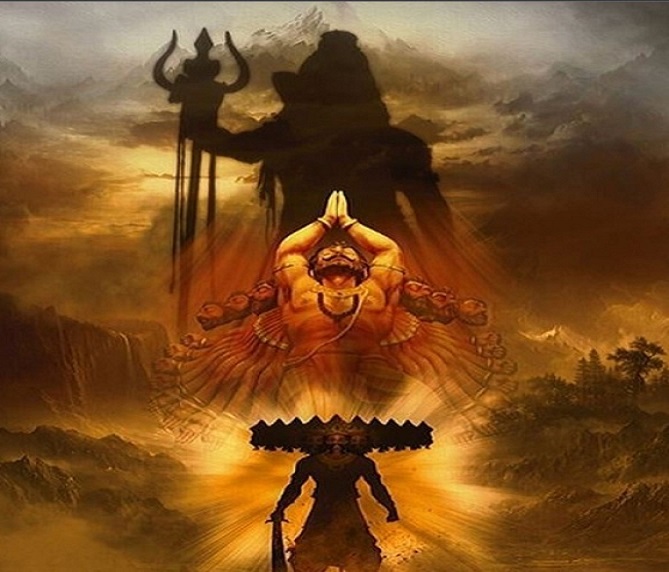
A demon or a god?
There is a village near the National capital where residents do not celebrate Dussehra and do not burn effigies of Ravana. They consider themselves to be the descendants of Ravana.
About 33 km east of New Delhi is the village of Bisrakh in Gautam Budh Nagar district of Uttar Pradesh. They worship the the demon-king Ravana, the arch-rival of Rama, the Hindu God of Sanskrit epic Ramayana.
The villagers, about 5,500 in number, believe that the village got its name from Vishravas, Ravana’s father and a famous sage.
In Bisrakh, though, the nine-day-long festival is not a period of celebration. While effigies of Ravan are burnt all over the country on the 10th day, Dussehra, Bisrakh residents refuse to do so.
Ravana The Ancestral Hero
The reverence that residents have for Ravan is evident from the moment one enters the village. His name can be seen in dozens of shops. At Ravana DJ, you can hire music equipment for festivals and celebrations. Men working in fields or chatting in front of shops wear shirts with the illustration of the ten-headed demon king. It is also common on car and truck windowpanes and bumper stickers.
In the heart of the village is a temple dedicated to the Hindu god Shiva. It is called the Bisrakh Ravana Mandir. Villagers believe that Ravana and his ancestors had worshipped here. Besides a Shivling, there are statues of other gods, goddesses and saints.
“The Shivling we worship here was established by Ravana’s grandfather Pulastya,” Vinay Bhardwaj head priest of the temple, told the media. “Pulastya’s son Vishravas and his grandsons Ravan and Kumbhakaran, have worshipped Shiva here.”
Torching Ravana’s Graven Image Brings Bad Omen
Unlike most Indian towns and villages, Bisrakh does not celebrate Dussehra. But it is not only out of reverence for the villagers’ mythological ancestor they also believe that celebrating the festival would bring the wrath of Ravan upon them.
There are many stories in the village about strange occurrences around Navratri in the past though there are no eyewitnesses to these. “Once, a family had burnt an effigy of Ravana on Dussehra,” says Dhansingh Bhatti, 50, a resident of Bisrakh. “Two members of the family died the next day.”
There are many stories in the village about strange occurrences around Navratri in the past though there are no eyewitnesses to these.
Bhatti says the village has not even held a Ram- Leela a traditional theatrical depiction of episodes from the Ramayana held during Navratri from the past thirty years.
Bhir Singh, a villager in his mid-60s, corroborates Bhatti, claiming that Ram Leela has not been held for the past five decades. “All the villagers who have hosted, organized or taken part in any Ram -Leela, have had a death in their families immediately afterwards,” said Singh.
“Those families, my father had told me, lost everything loved ones, businesses, happiness, and peace.”
All Gods Worshiped Including Ravana
At the Ravana Mandir in the village, head priest Bhardwaj has overseen the rituals for the past 16 years. He says that villagers worship all Hindu gods and goddesses here. “We will install statues of Rama, Sita and Lakshmana in the temple after Dussehra in October this year,” he said, showing idols covered with a white cloth in the premises of the temple. “The villagers want to get them installed.”
In the epic, at the climax of the battle between Rama and Ravana’s armies, the former kills the latter by shooting him with an arrow. This is often considered a victory of good over evil. But villagers have a different interpretation of the events. “Ram did not kill Ravan. Rather, he set the demon king free,” says Bhir Singh. “He freed Ravana from this world and sent him to heaven.”
“We respect Rama because he is our Lord, and we worship Ravana because he is our ancestor,” Singh told the media.

















